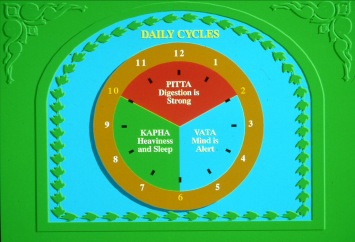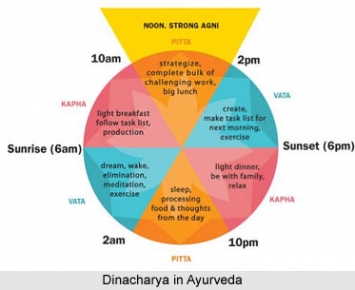

Explaining the Dosha-clock and the Ayurvedic Dinacharya!
By now we clearly understand that synchronizing our body with the rhythms of the nature is the key to a healthy life. And to explain this process, Ayurveda has divided a day or a 24-hour cycle into several day-parts. Likewise, a year or 12 months have been divided into six seasons. For now, let’s just concentrate on the daily routines. Ayurveda divides a day into two cycles. The first cycle is as follows: 2 A.M. – 6 A.M. – Vata Time. 6 A.M. – 10 A.M. – Ka...
read more...
A Detailed Explanation of the Ayurvedic Dinacharya or Daily Routine!
In our previous post, we spoke in brief about the Dosha-clock and the Ayurvedic Dinacharya and Ritucharya, and the reason why we should follow them for a healthy living. Let’s now explain in detail, what the Ayurvedic Dinacharya looks like. As part of our conscious attempt to understand and implement the simple-yet-effective principles of Ayurveda in our everyday living, we should try and redesign our daily routines on these lines: Morning 1. We should try and wake up two h...
read more...
The Ayurvedic Ritucharya or Seasonal Routine!
In our previous post, we spoke about the Ayurvedic Dinacharya or Daily Routine in detail. Now, let’s talk about the Seasonal Routine or Ritucharya. As mentioned earlier, Ayurveda divides a year or 12 months into six seasons. The year as such is divided into two Kaals, with three seasons forming each Kaal. These two Kaals are: 1. Aadaan Kaal or Uttarayana or Northern Solstice, and 2. Visarga Kaal or Dakshinayana or Southern Solstice. Aadaan means taking away and Visarga mean...
read more...

